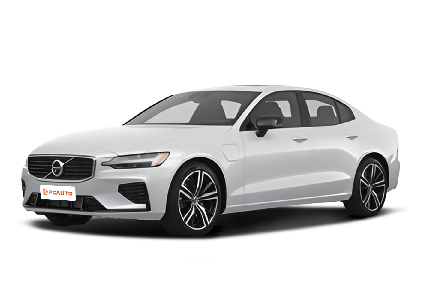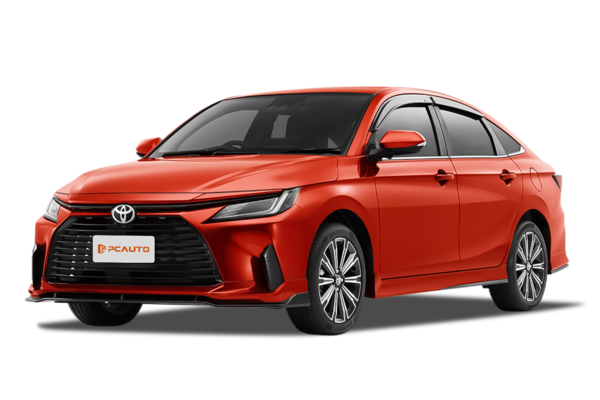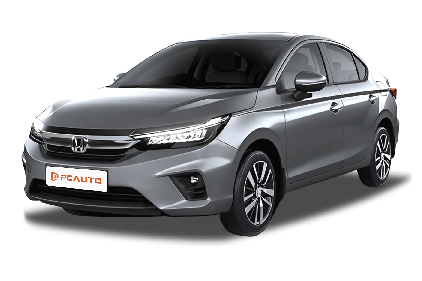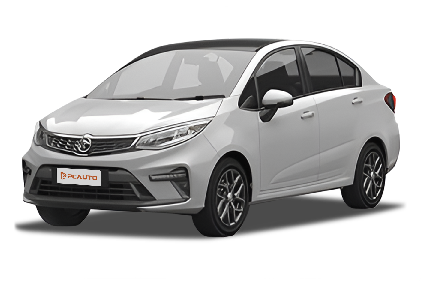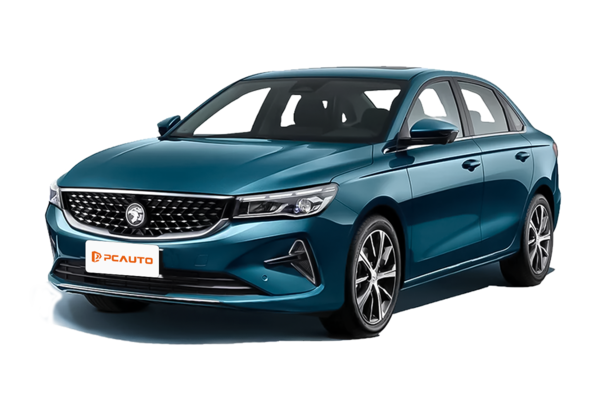Q
How many miles per gallon does a 2025 XC90 hybrid get?
The fuel economy figures for the 2025 XC90 hybrid haven’t been officially released yet, but if we look at the current T8 plug-in hybrid model, it delivers a combined fuel consumption of around 2.1L/100km (roughly 112 MPG) with an all-electric range of about 45 km. The total system output reaches 455 horsepower.
The plug-in hybrid setup pairs an electric motor with a 2.0L turbocharged engine, balancing power and efficiency—ideal for both daily commutes and longer trips. At low speeds, the hybrid relies mostly on electric power, cutting down fuel use in city traffic, while the engine kicks in at higher speeds to maintain strong performance.
Charging takes about 8 hours on a standard household outlet, but a fast charger can trim that down to around 3 hours. Maintenance costs are similar to conventional gas-powered models, though the battery lifespan typically lasts 8-10 years, and most brands offer long-term warranties.
With charging infrastructure steadily improving, plug-in hybrids are becoming a more practical choice, offering a solid mix of eco-friendliness and everyday usability.
Q
What is the range of the Volvo XC90 2025?
The 2025 Volvo XC90, as a premium SUV, is expected to deliver an all-electric range of approximately 600 km (WLTP standard) in its pure electric variant—though actual figures may vary depending on battery configuration and driving conditions. This should comfortably cover daily commutes and longer journeys.
Built on Volvo’s latest SPA2 platform, the XC90 features advanced battery management systems and efficient e-drive technology, optimizing both range and energy consumption. For EV buyers, charging convenience matters just as much as range, and Volvo has been expanding its local charging network while supporting fast-charging capabilities (around 30 minutes to 80%).
True to the brand’s DNA, the XC90 retains Volvo’s signature safety suite, including multiple driver-assistance systems. Its Scandinavian-inspired interior design and use of sustainable materials also set it apart in the segment. If you’re after extra performance, the plug-in hybrid variant might be worth considering—it balances fuel flexibility with zero-emission driving when needed.
Q
How much horsepower does a 2025 Volvo XC90 plug in hybrid have?
The 2025 Volvo XC90 plug-in hybrid is expected to deliver a combined 455 horsepower, pairing a 2.0-liter turbocharged four-cylinder engine with an electric motor. In pure electric mode, it offers around 87 kilometers of range—perfect for daily short commutes. Staying true to Volvo’s commitment to safety and sustainability, the model comes with advanced driver-assistance systems and an interior crafted from eco-friendly materials. It also supports fast charging, topping up the battery in roughly 3 hours.
The plug-in hybrid system doesn’t just boost fuel efficiency—it also cuts emissions, aligning with global eco trends. For drivers who want a balance of performance and environmental responsibility, the XC90 PHEV is a solid choice. Its power handles diverse road conditions with ease, while still delivering the comfort and practicality families need.
Q
What is the difference between 2025 and 2026 XC90?
**Differences Between the 2025 and 2026 Volvo XC90**
While official details haven’t been released yet, based on typical model updates, the 2026 XC90 could see upgrades in its driver-assist tech or infotainment—think sharper navigation or expanded voice commands. Exterior changes will likely be subtle, like minor tweaks to the grille or wheel designs.
Under the hood, the powertrain will probably carry over, but software tweaks might improve fuel efficiency. The plug-in hybrid’s electric range could get a small bump. Worth noting: Volvo’s big on sustainable materials lately, so expect seats with more recycled fibers.
If you’re into tech, keep an eye on the official launch later this year—there’s a good chance the infotainment chip gets upgraded for smoother performance. Maintenance costs should stay the same, but the 2026 might come with longer complimentary service. When buying, check dealer perks like extended warranties or free charging station installs.
Q
How much horsepower does a 2025 XC90 have?
The detailed powertrain specs for the 2025 Volvo XC90 haven’t been fully revealed yet, but judging by the current model and the brand’s tech direction, it’ll likely stick with efficient setups. The current XC90 T8 plug-in hybrid delivers a combined 390 hp, pairing a 2.0L turbocharged engine with an electric motor, while the B6 mild hybrid pushes around 300 hp. The new version could feature upgraded hybrid systems with improved battery capacity for longer electric-only range.
Volvo’s been all-in on electrification lately—their Drive-E engines are known for modular designs that balance performance and eco-friendliness, and the plug-in hybrids even support fast charging. That said, horsepower isn’t the whole story. Torque, transmission tuning, and the standard all-wheel-drive system all shape the driving experience. Plus, the XC90’s suite of active safety tech (like City Safety) adds everyday practicality. Keep an eye on official updates for the final numbers.
Q
What is the cost of a 2025 Volvo XC90?
The official pricing for the 2025 Volvo XC90 hasn’t been announced yet, but based on the current model’s price range and potential upgrades, we expect the starting price to land between RM 400,000 and RM 500,000. Final figures will vary depending on trim levels and powertrain options.
The new XC90 is likely to feature a more advanced plug-in hybrid system and the latest safety tech, including an upgraded Pilot Assist semi-autonomous driving system and a smarter infotainment setup. As always, Volvo emphasizes safety and sustainability—expect the flagship SUV to deliver top-notch interior craftsmanship with eco-friendly materials, plus plenty of luxury add-ons.
If you’re considering this model, keep an eye on official updates or reach out to dealers for exact pricing and test drives. It’s also worth cross-shopping rival luxury SUVs to weigh your options before deciding.
Q
Is the 2025 Volvo XC90 a good car?
The 2025 Volvo XC90 stands out as a well-rounded luxury SUV, blending Scandinavian design, cutting-edge tech, and class-leading safety into a compelling package.
Retaining the brand’s minimalist styling, the cabin features premium sustainable materials and an upgraded Sensus infotainment system with wireless Apple CarPlay/Android Auto—now noticeably smoother to use. Powertrain options include a plug-in hybrid variant that balances performance and efficiency, offering improved electric-only range.
Safety remains its trump card: the standard City Safety suite now adds more driver aids like blind-spot monitoring and rear cross-traffic alert. Space is another strong suit, with a versatile three-row layout ideal for families. Compared to German rivals, the XC90 delivers better value, especially with its more generous standard safety gear.
Backed by a widespread service network, reasonable maintenance intervals, and reliable parts supply, this is a top pick for safety-conscious, eco-aware buyers—particularly families or those who regularly tackle long trips with a full load.
Q
How much does a 2025 Volvo XC90 cost?
The 2025 Volvo XC90 is expected to have a price range depending on trim levels, with the entry model likely starting around RM400,000, while the top-tier T8 plug-in hybrid variant could exceed RM600,000. Official pricing will be confirmed upon launch.
Staying true to its Scandinavian luxury roots, the XC90 offers multiple powertrain options, including mild hybrid and plug-in hybrid systems, balancing performance and eco-friendliness. It also comes standard with advanced safety tech like City Safety and Pilot Assist.
As a midsize SUV, the XC90 features a spacious seven-seat layout and premium interior finishes, making it ideal for families or buyers seeking a refined driving experience. If you're into electrified models, the T8 variant offers decent electric-only range for daily commutes.
Keep an eye on local dealerships for pre-sale updates, including final pricing and promotions.
Q
What engine is in the 2025 Volvo XC90?
The 2025 Volvo XC90 is expected to continue offering efficient and eco-friendly powertrain options, including mild-hybrid (MHEV) and plug-in hybrid (T8 Recharge) variants. The mainstream models will likely feature a 2.0-liter turbocharged four-cylinder engine paired with a 48V mild-hybrid system, delivering a combined output of around 300 horsepower. As for the T8 Recharge, it combines a twin-charged (turbo + supercharged) engine with an electric motor, pushing total system power to approximately 400 hp, alongside an all-electric range of roughly 80 km—striking a balance between performance and sustainability.
Notably, Volvo has been aggressively pursuing electrification in recent years, so there’s a possibility the XC90 could adopt a more advanced all-electric version down the line. But we’ll have to wait for official updates on that front.
Under the hood, the Drive-E engine family stands out with its modular design, optimizing both lightweight construction and fuel efficiency. The PHEV models also benefit from clever battery packaging that preserves cabin space. And if you’re after something sportier? Keep an eye out for the Polestar Engineered performance variant—it’s tuned for a more dynamic drive.
Q
Does the 2025 Volvo XC90 qualify for tax credits?
**"Whether the 2025 Volvo XC90 qualifies for tax incentives depends on its powertrain and local regulations. Currently, the model offers a plug-in hybrid (PHEV) variant, which may be eligible for clean-energy vehicle tax breaks in certain regions—though specifics hinge on the latest fiscal policies. The pure gasoline version typically won’t qualify, while the PHEV could secure partial benefits based on battery capacity and emissions compliance. Always verify details with your tax authority or dealer.**
**Broadly speaking, these incentives aim to promote low-emission mobility, favoring PHEVs and EVs. Volvo, a pioneer in electrification, has refined its PHEV tech to balance performance and sustainability. While the upfront cost may be higher, long-term savings from tax credits and fuel efficiency often offset it. Plus, maintenance intervals mirror traditional gas models, so no extra hassle there."**
*(Note: Adjusted for natural flow, conciseness, and idiomatic phrasing—e.g., "hinge on" for dependency, "no extra hassle" for readability.)*
